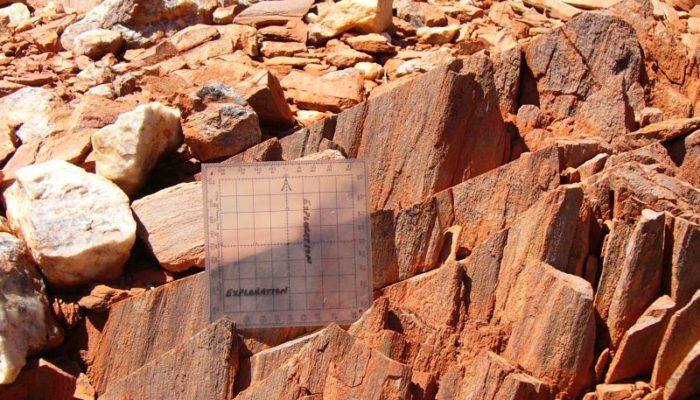
Deep beneath our feet, deformation of rocks at high temperature produces impressive structures such as shear zones, that localize the movement of two volumes of rock with respect to one another. Shear zones are strongly deformed bands with strongly foliated structures (i.e., with rocks that look like a pile of leaves) and kinematic indicators, such as S-C fabrics, that tell us geologists which way rocks moved during deformation.
But… how do we know in which direction rocks moved? If only there were one easily recognizable structure in the rock volume that we could use to learn the direction of tectonic stretching… Ah, wait, we can use lineations!
What is a lineation?
We have already shown in this series that when rocks deform, some platy minerals and layers get flattened and produce foliations. The same mechanisms can stretch objects in a specific orientation, producing linear fabrics that we can see and measure in rocks: stretching lineations.

Lineations are linear elements in rocks, like elongated minerals and objects, that point to a certain direction. Imagine a stack of straws with the same orientation. Example from An Introduction to Geology (source: Peter Davis; Open Geology).
Stretching lineations (also called object lineations) are linear fabrics outlined by deformed grains and objects in rocks. They commonly consist of mineral grains and aggregates that stretch, rotate, or grow along the direction of tectonic transport during deformation. The minerals that most commonly define lineations are those with prismatic or needle-like habit, like amphibole, pyroxene, epidote, or tourmaline. Stretching lineations can also be defined by rods or aggregates of minerals or deformed objects such as clasts and fossils.
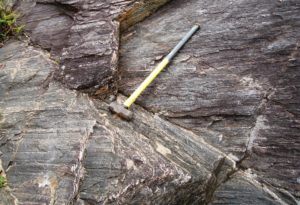
Stretching lineation on foliation planes in a mylonitic amphibolite. West of Antalaha, northern Madagascar. Photo by Diorit via wikimedia.org.
Lineations are useful
When geologists map an area, they commonly measure foliations, fold axes, and lineations. Lineations tell us the direction where the rocks ‘stretched’ or moved when they deformed. Therefore, if we are looking for kinematic indicators, we need to find a section parallel to stretching lineations and perpendicular to the foliation. If correctly interpreted, stretching lineations help us understand the sense of motion/tectonic transport in deformed rock volumes and can be linked to the kinematics of shear zones, vergence of folding and, at larger scale, the direction in which two continents collided, just to list a few examples.
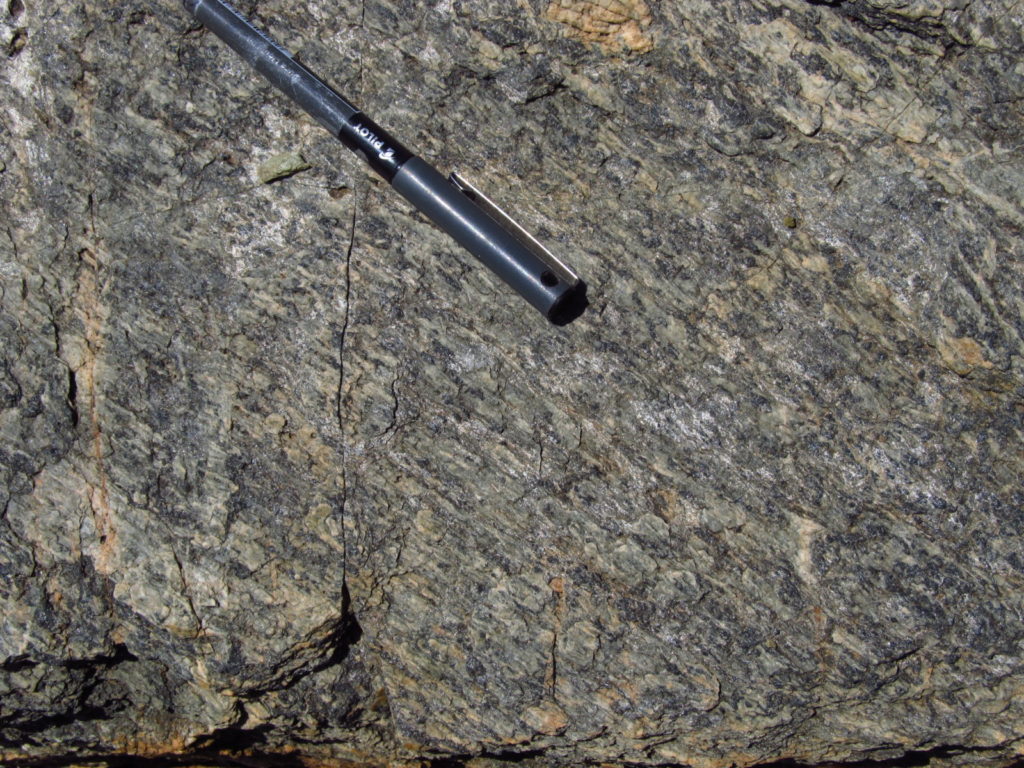
This micaschist has an evident stretching lineation oriented parallel to the pen! The whitish to grey aggregates are quartz rods. The black, elongated grains are stretched cordierite and andalusite grains. The micaceous material is white mica (metallic) and biotite (metallic, black). Syntectonic aureole of the Porto Azzurro Pluton, Calamita Schists (Isle of Elba, Italy). Photo from Papeschi et al. (2017; Tectonophysics).
References and Further Reading
Introduction to Geology by Chris Johnson, Matthew D. Affolter, Paul Inkenbrandt, and Cam Mosher, Salt Lake Community College. Open Geology Project.
Burg, J. P., Bale, P., Brun, J. P., & Girardeau, J. (1987). Stretching lineation and transport direction in the Ibero-Armorican arc during the Siluro-Devonian collision. Geodinamica Acta, 1(1), 71-87.
Cloos, E. (1946). Lineation: a critical review and annotated bibliography. Geological Society of America.
Fossen H. (2010). Structural Geology. Cambridge University Press.
Lin, S., & Williams, P. F. (1992). The geometrical relationship between the stretching lineation and the movement direction of shear zones. Journal of Structural Geology, 14(4), 491-497.
Piazolo, S., & Passchier, C. W. (2002). Controls on lineation development in low to medium grade shear zones: a study from the Cap de Creus peninsula, NE Spain. Journal of Structural Geology, 24(1), 25-44.
Tikoff, B., & Greene, D. (1997). Stretching lineations in transpressional shear zones: an example from the Sierra Nevada Batholith, California. Journal of Structural Geology, 19(1), 29-39.
Turner, F. J. & Weiss L. E. (1963). Structural analysis of metamorphic tectonites, Francis J. Turner, Lionel E. Weiss. McGraw-Hill. New York. US.

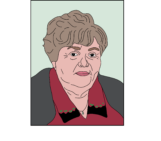


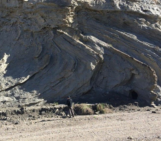
Falk H. Koenemann
Regarding the first picture from the Glengarry Basin, Australia: the joints are diagnostic, but the sense of shear is not clearly discernible in this picture. The joints are due to the elastic energy in the rock, stored during plastic deformation. They opened late in the uplift history when the confining pressure could no longer keep the rock together, 1-3 km beneath the surface. The joints are young, but the stored elastic potential that caused them is as old as the lineations, and genetically connected to them. In this picture we look along Z upon the XY plane. In a view along Y upon the XZ plane the joints are not perpendicular to the foliation plane, but are inclined against the sense of shear by 10-20°. Since the large joint surfaces of the three major cracks in the center of the image cannot be seen, it is likely that they are inclined away from the viewer. If this is the case, the sense of shear in this outcrop was foreground down – background up.
Sam Rice
You say “if we are looking for kinematic indicators, we need to find a section parallel to stretching lineations and perpendicular to the foliation”. But is this correct? shouldn’t we look perpendicular to the lineation rather than parallel to it? Is there a consistent geometric relationship between stretching lineations and strain and, therefore, kinematic sense? i.e. is stretching lineation always equal to sigma 3? in which case always perpendicular to the direction of transport? I’m currently reading an article on Rhodope which says the tectonic transport direction was to the SW which is roughly parallel to the stretching lineation. Can this be correct?
Sam Rice
To answer my own question, after doing some digging around, it is correct because sigma 3 is not perpendicular to the direction of transport in simple shear.
Samuele Papeschi
Hi Sam, sorry for my slow response. I have also seen your second comment.
In simple shear, the lineation forms parallel to the direction of tectonic transport – or the ‘fabric attractor’ of the flow if you prefer to think in terms of vorticity. The plane that is perpendicular to the foliation contains the lineation and all kinematic indicators, because this plane is oriented parallel to the direction of shearing. There are a few cases, however, in which kinematic indicators may develop in the plane perpendicular to the lineation and foliation, e.g. some triclinic shear zones… but this is a complication for the aims of this post. I see you are reasoning in terms of sigma1-sigma3 but this adds further complexity because the lineation may be oriented parallel to sigma3 only at the very beginning of the existence of a shear zone (when you are developing an oblique or S-foliation), but then things start to rotate parallel to the shear plane and the lineation develops obliquely to sigma3. I personally prefer to think in terms of strain ellipsoid or eventually istantaneous stretching axes.
If you are interested about the subject, I may recommend Xypolias (2010) [a review about vorticity], Simpson and de Paor (1993), or the books by Fossen (2007). Structural Geology, and Passchier & Trouw: Microtectonics, where these concepts are illustrated in detail. Sorry that I can’t cite other stuff or link them directly but I am out of town with limited internet connection. Enjoy!